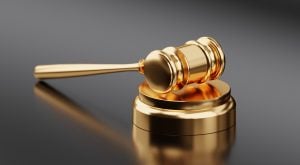By Jacob Wolinsky. Originally published at ValueWalk.

J. Michael Keyes comments on the Google vs Oracle opinion that came down from the Supreme Court this morning.
Q4 2020 hedge fund letters, conferences and more
Supreme Court’s Google vs Oracle Decision
J. Michael Keyes is a partner at the international law firm Dorsey & Whitney. Keyes is an intellectual property attorney with extensive trial and litigation experience in cases involving trademarks, copyrights, unfair competition and false advertising. He has tried several cases in federal courts across the United States. He’s been following the Google vs Oracle case through the courts. Of the decision he says,
“The Supreme Court issued the biggest copyright decision in a generation today. It held that Google’s copying of Oracle’s API was fair use as a matter of law. It’s hard to overstate the significance of this decision,” Keyes says.
There are several notable aspects.
“The Court noted that fair use has “an important role to play for computer programs by providing a context-based check that keeps the copyright monopoly afforded to computer programs within its lawful bounds.” I suspect this theme will unlock many future arguments and claims regarding the application of fair use to software related claims. We will see more copying, more cases, and more claims of fair use,” Keyes says.
“The Court clarified how reviewing courts should review fair use decisions. The ultimate question of whether the facts rise to the level of fair use is reviewed de novo. This means that there will always be room to argue on appeal that the jury or trial judge got it “wrong.” Keyes says.
The Sweat Of The Brow Concept
“The Court clarified that the “purpose and character” of the use turns largely on how “transformative” the use is. We’ve known that largely from prior lower court decisions but the Court embraced that standard and added to it. Here, the Court focused on the fact that Google was creating a different platform and the collective experience of programmers was harnessed to achieve this result. This seems to inject a new question into the “transformative” mix: how significant was the effort to create a transformative work? The greater the amount of time/money/effort that goes into making a work transformative is now an important component to consider. There is a bit of judicial irony here. The “sweat of the brow” theory of copyright protection—i.e., copyright protection turns on how much one toiled to make a work—was rejected by the Court decades ago. Now, this “sweat of the brow” concept appears to have been resurrected and comes into play in assessing whether a work was sufficiently transformative,” Keyes says.
“The Court also clarified what “market harm” means in the context of fair use of computer programs. The Court focused not on harm in the general sense but whether the second work acts as a “market substitute.” That seems to be a tighter standard than courts have looked at in the past. The Court also noted that you’ve got to balance the “harm” to the copyright holder vs. the likely benefits to society. And, the Court also looked at Sun’s early pronouncements that Google’s use would be “helpful” to Sun. This means that “market harm” isn’t straight forward and one dimensional. A number of facts—including early statements and conduct by the copyright holder—will come into play in assessing harm,” Keyes says.
“The Court’s decision wiped away a massive claim for damages (many billions) against Google,” Keyes says.
The post What Supreme Court Google vs Oracle Decision Means appeared first on ValueWalk.
Sign up for ValueWalk’s free newsletter here.



